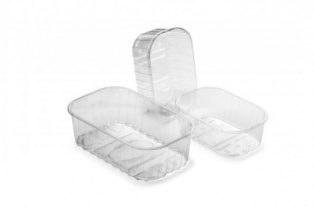PET-trays: working towards structural solutions
The use of PET-trays has increased exponentially in recent years. However, the trays are still difficult to recycle, which leads to the accumulation of large stocks at waste sorting companies and post separators. The Netherlands Institute for Sustainable Packaging (KIDV) carried out an exploratory research into the status of PET-trays on the market, intended to provide an impetus to close the loop for PET-trays.

Scale and functionality
The research showed that the total volume of PET-trays on the Dutch market is estimated at 30 kilotons. In addition it is estimated that 70 to 80% of these PET trays is used for food products and 20 to 30% for non-food products. The KIDV also took alternatives to PET into account that may be more suitable for recycling. This showed that PET has a number of advantages, such as low permeability of oxygen and carbon dioxide, which is beneficial for the shelf-life of products. Another advantage is the strength of the material, which reduces the likelihood of tearing.
New opportunities in recycling
At present, there are still no viable recycling processes for PET trays in the Netherlands. In the techniques currently available, the PET-tray stream is at most applied as a sub-stream of the recycling of PET-bottles, or part of the mixed plastics stream. In both cases, there is an upper limit to the amount of PET-trays is allowed to be added. Due to the autonomous growth of PET-trays and because of changing quality-criteria for the sorted PET-stream and the mixed stream, this upper limit is increasingly being tightened. A fall-back option is to incinerate PET-trays and generate heat and electricity.
In the exploratory research, the KIDV shows that the extent to which PET trays can be recycled in the future depends on the success of new initiatives in the recycling market. Various stakeholders in the chain are working together on initiatives to facilitate a structural solution, such as mechanical recycling in the short-term and chemical recycling in the mid-term. However, as yet there are no parties that can upgrade the production capacity of these initiatives in the short-term.